Arrange the following in decreasing order of basicities :
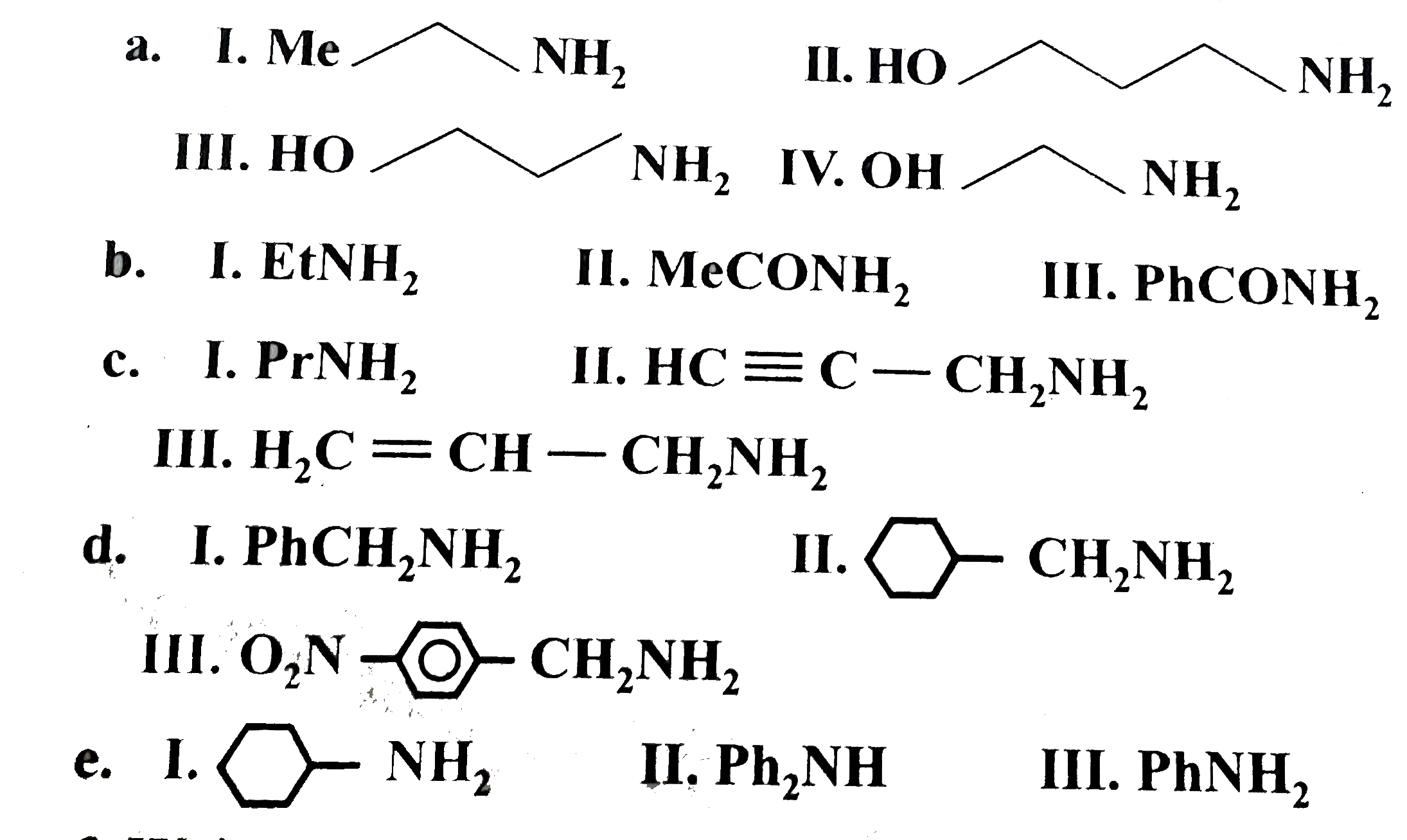
(f) Write the conjugate base and conjugate acid of (I)HOCH2CH2NH2.
Video Solution
Text Solution
(a) I>II>III>Iv
The −I effect of OH group decreases the ¯e density on N atom, and thus decreases its basicity. If −I effect is large distance operating from (−NH2), then the base is more stronger, and vice versa. So, basicity II>III>IV.
(I) is the stronger base due to +I effect of (MeCH2) group.
(b) I>III>II
(i) The +I effect of (Et−) group increases the ¯e−density on N atom and thus increase basicity and is the stronger base.
(ii) (C=O) is EWG and decreases the basicity by delocalisation of ¯e−density from N to O

Both the amides are weaker bases then amine. That is why amides amphoteric in nature, i., they are insoluble in aqueous acids and do not form salts unlike amines.
(iii) In benzamide (PhCONH2), there is cross conjugation of (C=O) with Oh group and with NH2 group, as shown below.
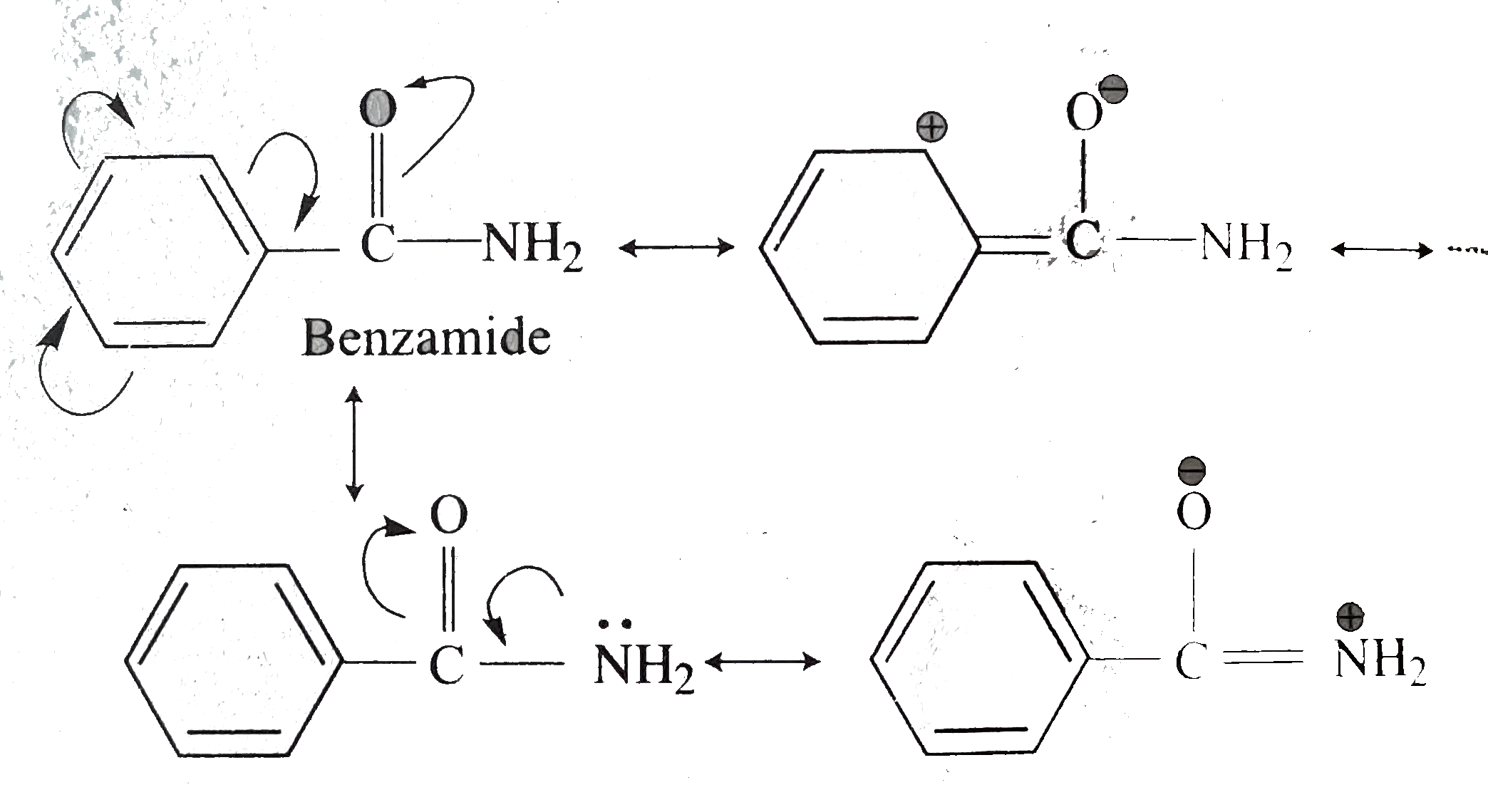
Therefore, ¯e−density on N in benzamide (III) is slightly more than aliphatic amide (II). So, (III) is more basic than (II). Hencem basicity order is EtNH2>PhCONH2>MeCONH2.
( c) State of hybridisation decides the basic character. Basic order is sp3>sp2>sp hybrid orbitals.
Conversly, the more the s character (as in sp hybrid orbitals) of β−..C atom, the more is the ¯e− withdrawing −I effect, and weaker the base. So, basicity order is :
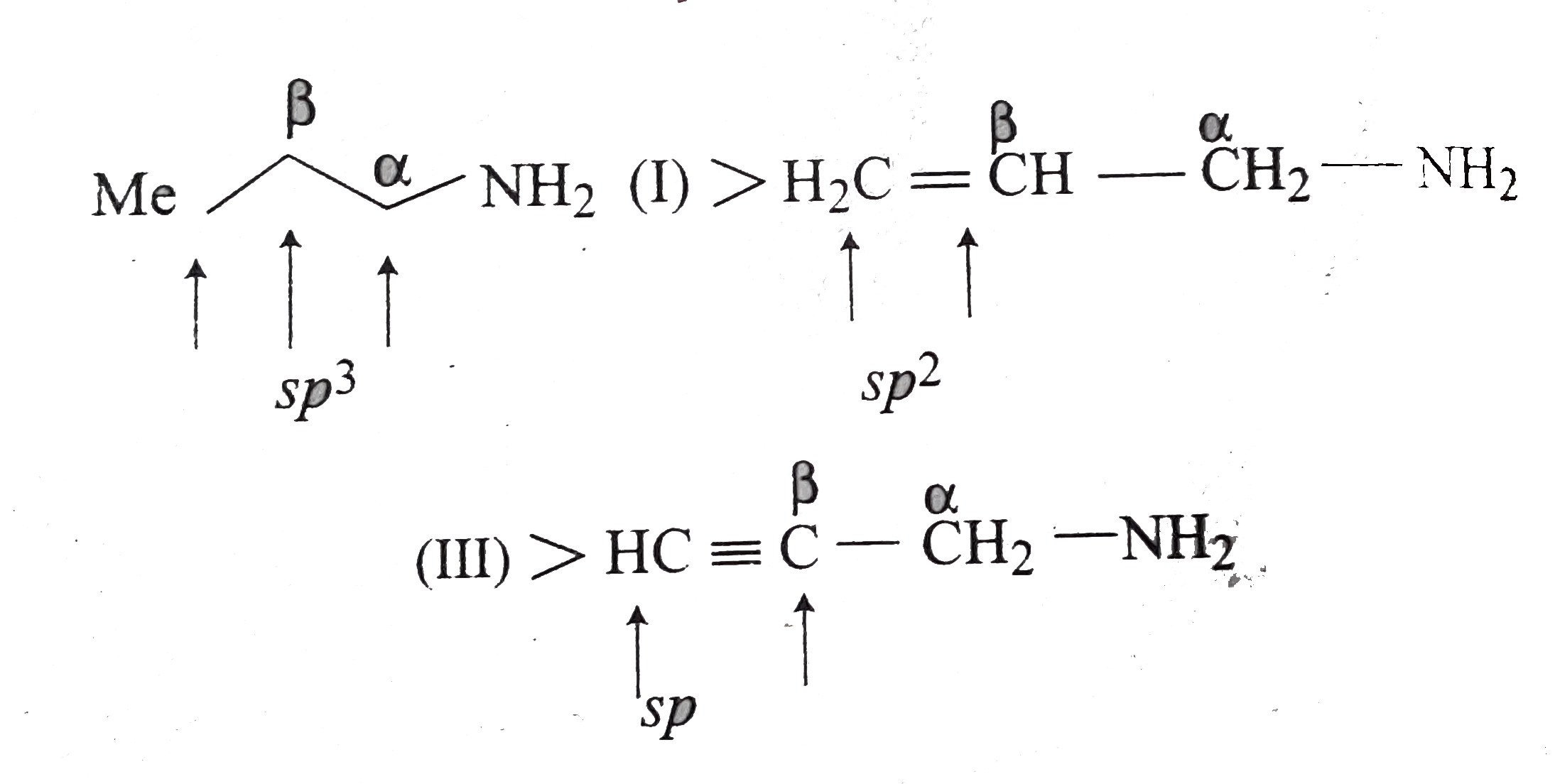
Alternatively, ¯e- withdrawing −I effect of :
HC≡CH−CH2−>PropargylCH2≡CH−CH2−>Allyl
CH3−CH2−CH2−Propyl (d) II>I>III

In (II), β−C atom is sp3 atom is sp3 hybridised, whereas in (I) and (III), it is sp2 hybridised, so ¯e− withdrawing - I effect of sp2>sp3. Moreover, ¯e−withdrawing p−NO2 makes the Ph ring even more ¯e withdrawing and decreasing the bascity.Hence, the order as given above.
( e) I>III>II
In (I) 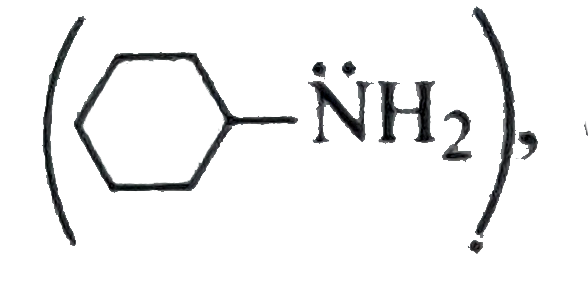 , ¯e−density on N atom is localised and hence most basic.
, ¯e−density on N atom is localised and hence most basic.
In (II) 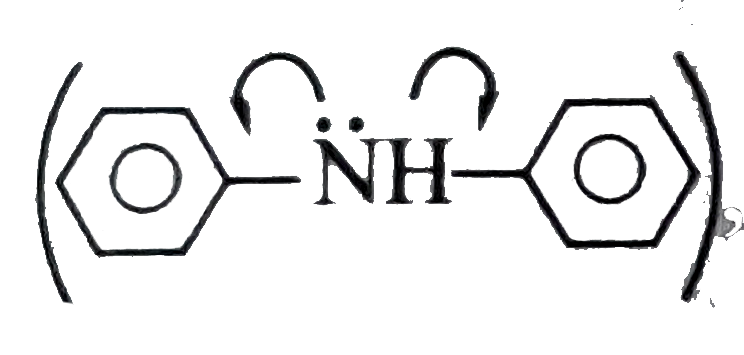 , ¯e−density on N atom can be delocalised in both the Ph rings and hence least basic.
, ¯e−density on N atom can be delocalised in both the Ph rings and hence least basic.
In (III) 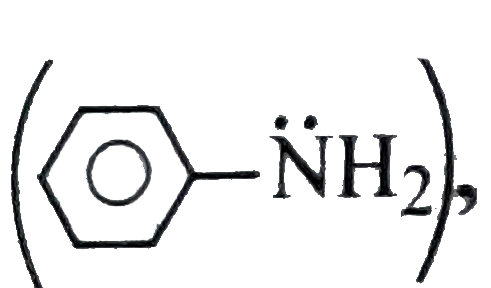 , ¯e−density on N is delocalised only in Ph ring, and hence is less basic less than (I) and more basic than (II)
, ¯e−density on N is delocalised only in Ph ring, and hence is less basic less than (I) and more basic than (II)
Moreover, (I) is an aliphatic (cycle) amine, and (II) and (III) are aromatic amines which are less basic than (I). In aromatic amines, LP¯e,s on N atom are delocalised into the ring mainly at o and p positions, thereby weakening the basicity.
(f) In (I) (HO−CH2−CH2−NH2), is more acidic than NH2. So, conjugate base of (I) is :
OӨ−CH2−CH2−NH2
(ii) In (I) is HO−CH2−CH2−CH2−⊕NH3.
|
Topper's Solved these Questions
- GENERAL ORGANIC CHEMISTRYBOOK - CENGAGE CHEMISTRYCHAPTER - GENERAL ORGANIC CHEMISTRYEXERCISE - Solved Example
18 Videos
- GENERAL ORGANIC CHEMISTRYBOOK - CENGAGE CHEMISTRYCHAPTER - GENERAL ORGANIC CHEMISTRYEXERCISE - Subjective
11 Videos
- CLASSIFICATION AND NOMENCLATURE OF ORGANIC COMPOUNDSBOOK - CENGAGE CHEMISTRYCHAPTER - CLASSIFICATION AND NOMENCLATURE OF ORGANIC COMPOUNDSEXERCISE - Analytical and Descriptive Type
3 Videos
- HYDROGEN, WATER AND HYDROGEN PEROXIDEBOOK - CENGAGE CHEMISTRYCHAPTER - HYDROGEN, WATER AND HYDROGEN PEROXIDEEXERCISE - Subjective Archive (Subjective)
3 Videos
Similar Questions
Knowledge Check
The conjugate acid of NH2 is
ANH3BNH2OHCNH+4DN3HThe conjugate acid of NH2− is
AN3−Bgt NH2−CNH3DNH+4Arrange the following in their decreasing order of acidity.
(I)
(III)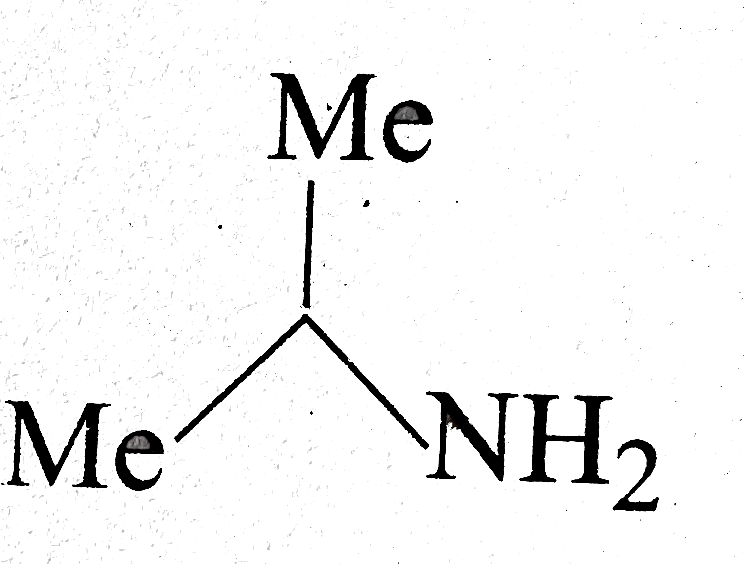
(IV) NH3.AIII>IV>I>IIBI>II>III>IVCIV>III>II>IDII>III>I>IV
